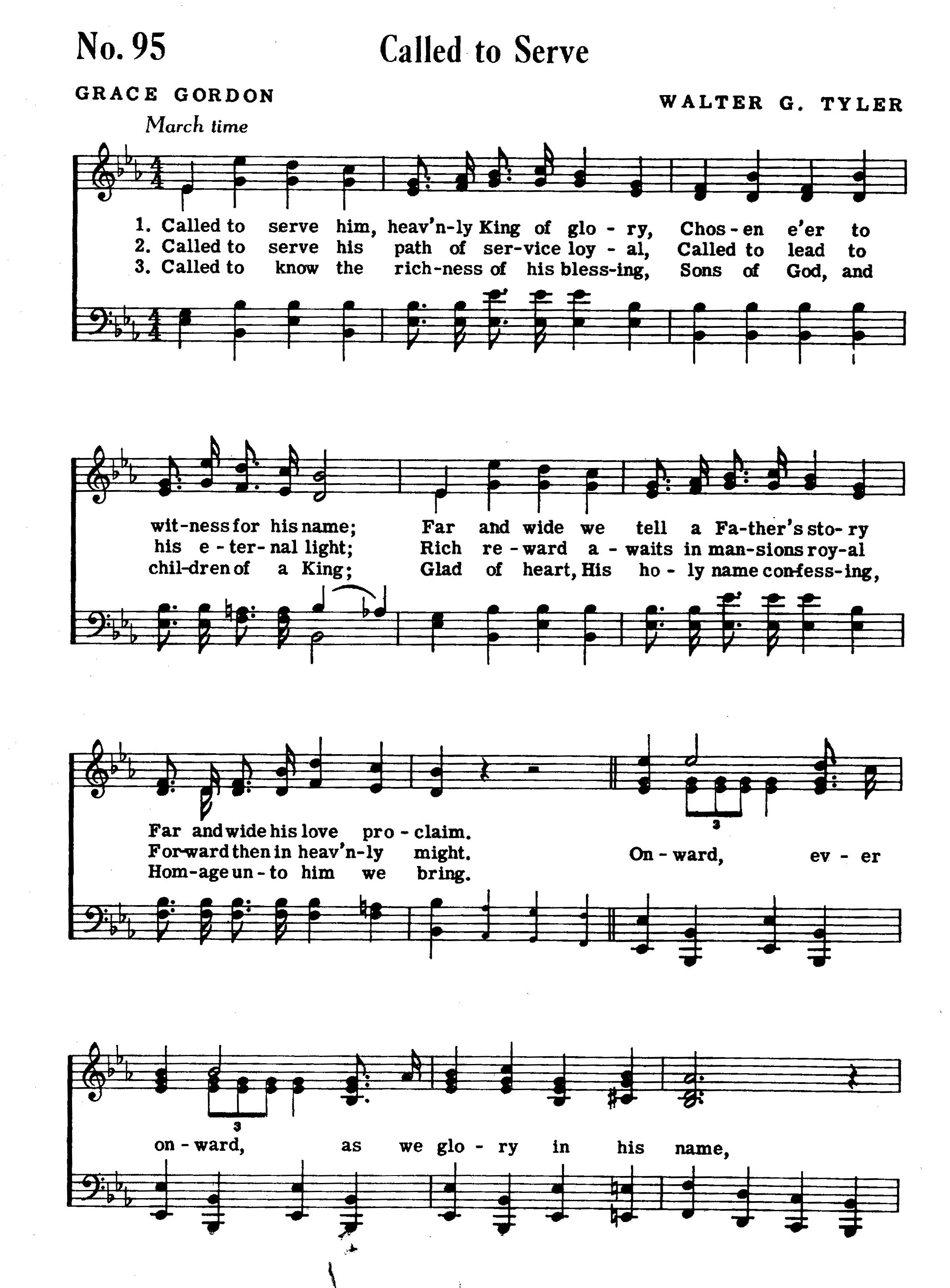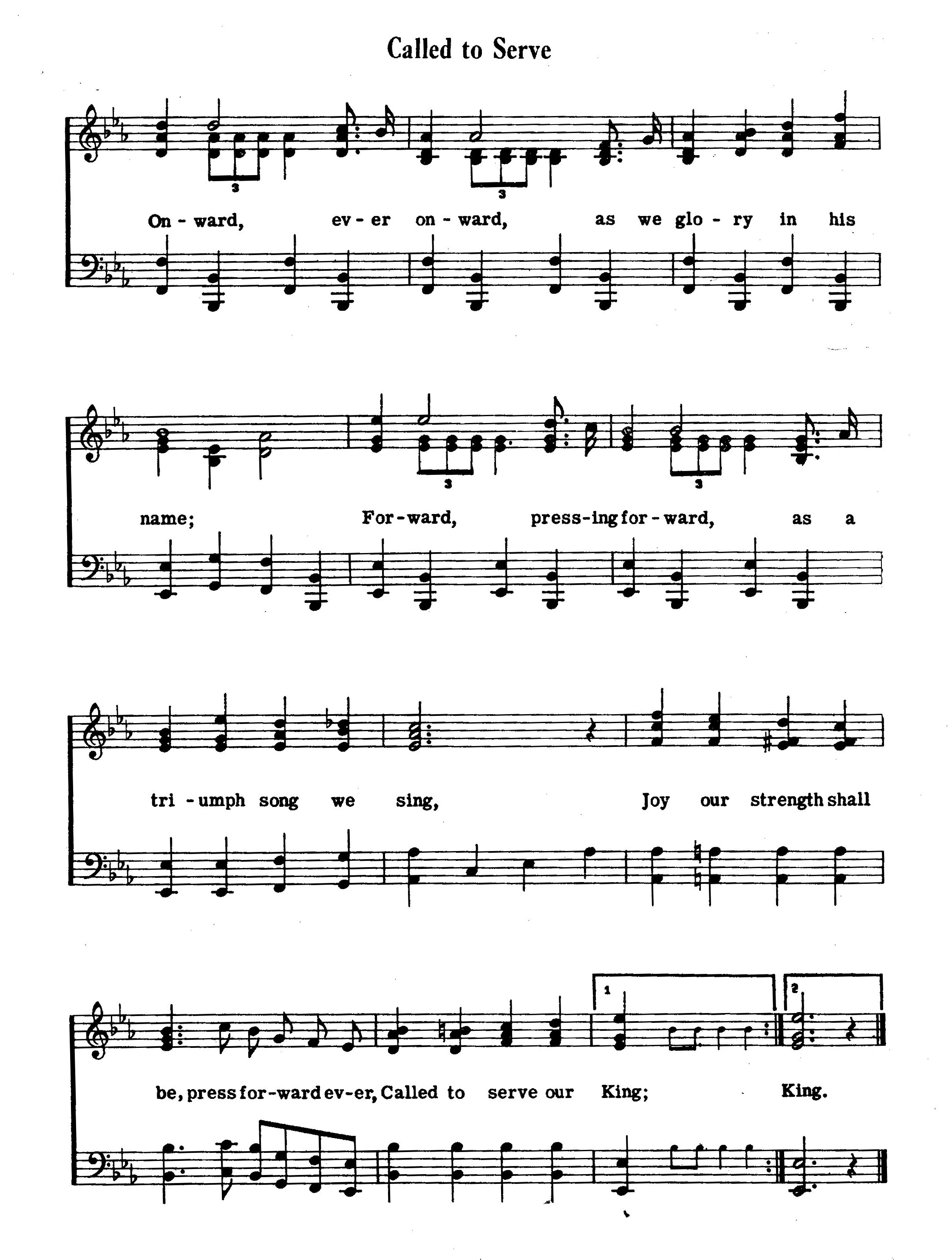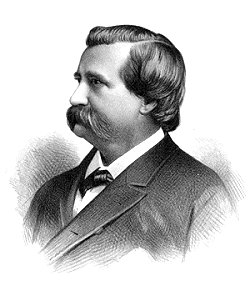Called to Serve
Hymn Info ~ Author ~ Composer

 Through modern technology, information today is transmitted around the globe instantly. Gone are the days of the pony express, the carrier pigeon and the courier. People now run marathons as athletic activities, not to deliver a message, as the Greek messenger Pheidippides did in his run from the battlefield at Marathon to Athens, 2500 years ago.
Through modern technology, information today is transmitted around the globe instantly. Gone are the days of the pony express, the carrier pigeon and the courier. People now run marathons as athletic activities, not to deliver a message, as the Greek messenger Pheidippides did in his run from the battlefield at Marathon to Athens, 2500 years ago.
Although we have such great communication tools and advantages today, it is an accepted fact that for certain things the most effective communication method is still in person, face to face discussion. This kind of teaching and discussion was used by our Savior, Jesus Christ, over two thousand years ago, and also his disciples after Him as they went to "all nations," teaching the gospel and commandments of God.
The Savior's commandment to take the gospel to all the world is still in effect today, and the text of our hymn 'Called to Serve' conveys a joyful message about that effort. As recorded in the New Testament, the Savior told his disciples that he could not bear witness of himself. He taught that the works his Father sent him to do bear witness that he was sent by the Father, that the scriptures and the Holy Spirit would testify of him, and he instructed those who had been with him to also bear witness. They were to go into all the world and preach the gospel to every creature. This direction is reflected in the text of the first verse, 'Chosen ever to witness for his name, Far and wide we tell the Father's story, far and wide his love proclaim."
There is dual meaning in the phrase "Far and wide we tell the Father's story." In one sense, it refers to Disciples of Christ who travel to places around the world, far from home, bearing their witness of Him in face-to-face communication. In another sense, it refers to Disciples of Christ who live all around the world, and bear witness of Him in their native lands.
What does it mean to be "called to serve?" It is apparent that there is more than one definition under the religious sense of the phrase. It can be thought of in terms of an official assignment or "calling" from someone with ecclesiastical authority to perform a particular work in the church. Or we may think of it as a personal response to promptings of the Holy Ghost that lead a person to change their life and become a follower of Christ.
"Called to Serve" was originally written as a children's song and is thought to have been first published in a 1914 collection titled The Song of Praise. This was published by the Adam Geibel Music Company in Philadelphia, Pennsylvania. Some of the other songs in the collection, as noted on hymnary.com, suggest that the collection was intended for a 'Children's Day' program. This would likely have been one of the activities of an education program for children in Protestant churches of the time.
"Called to Serve" was included in the 1951 edition of 'The Children Sing,' published by The Church of Jesus Christ of Latter-day Saints (LDS), at Salt Lake City, Utah. This was the official children's songbook of the church at the time. (See the image of this publication below.) This edition included three verses, one of which is not found in later publications. The verse reads:
Called to serve his path of service loyal,
Called to lead to his eternal light;
Rich reward awaits in mansions royal.
Forward then in heavenly might.
Two verses continued in the subsequent LDS Children's songbook, 'Sing With Me,' and with a few alterations to the text, it was included in the current 1985 LDS Hymnal, and the 1989 'Children's Songbook.' The slight alterations made it more suitable for the intended users without changing the core meaning. The current phrase "Sons and daughters, children of a King," was originally written "Sons of God and children of a King." "Praises unto him" was substituted for "homage unto him" and "God our strength will be" was previously "Joy our strength will be."
"Called to Serve" is frequently sung at occasions involving full time missionary work in the LDS church, and one such occasion is reported to have been instrumental in the song's inclusion in the church hymnal. In April of 1985 a meeting of LDS church leaders, including all of the mission presidents was held in Salt Lake City. A group of young adult missionaries then in training marched into the Assembly Hall singing "Called to Serve" and those in attendance were said to be profoundly moved. It is understood that it was the last hymn to be added to the new 1985 hymnal.
The hymn continues to motivate and remind us of why and how we serve the Lord.


Grace
Gordon is a pseudonym (or pen name) that was used by Elsie Duncan Yale. Elsie
was born in October of 1873 at Brooklyn,
New York. She is
believed to be the daughter of Charles Crooker Duncan who had been a ship's
captain and served as Shipping Commissioner of the Port of New York
from 1872 to 1884. Little is known of her life, but it is apparent
that she had a good education and was a devout Christian. She
married Arthur Wells Yale, Jr. and was a prolific writer. She
published a number of works including songbooks, plays and pageants. She
is known to have written over three hundred songs.
Elsie
passed away in January of 1956, at the age of eighty-three, at San Bernardino, California. She
was laid to rest in her birthplace of Brooklyn,
New York. 
Called to Serve
Text as found in the 1985 LDS Hymnal Called to serve Him, heav'nly King of glory, Chosen e'er to witness for his name, Far and wide we tell the Father's story, Far and wide his love proclaim. Called to know the richness of his blessing -
Sons and daughters, children of a King - Glad of heart, his holy name confessing, Praises unto him we bring. Chorus:
Onward, ever onward, as we glory in his name; Onward, ever onward, as we glory in his name; Forward, pressing forward, as a triumph song we sing. God our strength will be; press forward ever, Called to serve our King.
|

 It is believed that Walter G. Tyler was a pen name used by Adam Geibel. As supporting evidence, all of the ten hymn tunes shown to have been composed by Walter G. Tyler on hymnary.org were copyrighted by either the Adam Geibel Music Company, or Geibel & Lehman.
It is believed that Walter G. Tyler was a pen name used by Adam Geibel. As supporting evidence, all of the ten hymn tunes shown to have been composed by Walter G. Tyler on hymnary.org were copyrighted by either the Adam Geibel Music Company, or Geibel & Lehman.
Adam Geibel was born to Adam and Louisa Geibel in September of 1855 at Neuenheim (or Frankfurt), Germany. His father was employed as a merchant, and Adam, Jr. was one of several siblings in the family. It is said that about the age of eight, young Adam contracted an eye infection, which left him blind.
The next year, about 1864, the family immigrated to the United States. The 1880 census shows the family residing in Philadelphia, Pennsylvania, with the father retired and the younger Adam, at age 25, employed as a music teacher.
He had received his education at the Philadelphia Institute for the Blind, and was evidently an ambitious young man as he wrote and teamed on a number of songs that became quite popular and founded a music company. He wrote music for gospel songs, as well as anthems and cantatas. Between 1898 and 1905, he was co-editor of six hymn collections published at Philadelphia. His work with John Sweney in the publication of "Behold! A Royal Army" in 1894 may have led him in the direction of being an editor. Adam wrote music for many of the well-known hymnists of the time and about forty hymn tunes are known today.
Adam was also a church organist in Philadelphia. He served at the Baptist Temple at Berks and Broad Streets, which became part of Temple University and is now a performing arts center. He also served at the John B. Stetson Chapel. This Stetson chapel may have been constructed by the famous hat maker for his employees.
From 1884 to 1901, it is said that Adam returned to the Philadelphia Institute for the Blind and served as a music teacher. During this time, he also organized the J. B. Stetson Mission, presumably associated with the Chapel of the same name. He was also said to have conducted the Stetson Chorus of Philadelphia.
In August of 1933, at the age of 77, the work of this remarkable blind musician concluded and he was laid to rest at Philadelphia. His music is a reminder of his triumph over hardship and an inspiration to all.

Information in this article was accessed between May and November of 2017 and came from:
Children’s Songbook of The Church of Jesus Christ of Latter-day Saints, (The Church of Jesus Christ of Latter-day Saints, Salt Lake City, Utah, 1989, p. 174)
"Sing With Me - Songs for Children", (Deseret Book Company for The Church of Jesus Christ of Latter-day Saints, Salt Lake City, Utah, 1980, p. B-85)
"The Children Sing", (The Church of Jesus Christ of Latter-day Saints, Salt Lake City Utah, 1951, p. 95.)
'Holy Bible, King James Version,' Matthew 28:19-20, p. 1241; Mark 16:15, p. 1271; John 5:31, p. 1334; John 15:26-27, p. 1355. (The Church of Jesus Christ of Latter-day Saints, Salt Lake City, Utah, 1979)
Webster’s New Collegiate Dictionary, (G & C Merriam Company, Springfield, Massachusetts, 1975)
https://www.athensmarathon.com/history/
http://www.businesswritingblog.com/business_writing/2009/03/face-to-face-phone-and-emailwhich-is-the-best-communication-.html
https://hymnary.org/person/Yale_Elsie
http://www.hymntime.com/tch/bio/y/a/l/yale_ed.htm
https://hymnary.org/hymnal/SoP1914
http://www.oldhalifax.com/county/OliveBranchMethodistChurch.htm
https://www.findagrave.com/cgi-bin/fg.cgi?page=gr&GRid=57214043 (accessed 24 Sept 2017)
https://hymnary.org/person/Tyler_Walter
http://www.hymntime.com/tch/bio/g/e/i/geibel_a.htm
https://familysearch.org/search/record/results?count=20&englishSubcountryName=Pennsylvania&query=%2Bgivenname%3AAdam~%20%2Bsurname%3AGeibel~%20%2Bbirth_year%3A1855-1855~%20%2Bdeath_place%3APhiladelphia~%20%2Bdeath_year%3A1933-1933~%20%2Brecord_country%3A%22United%20States%22%20%2Brecord_subcountry%3A%22United%20States%2CPennsylvania%22